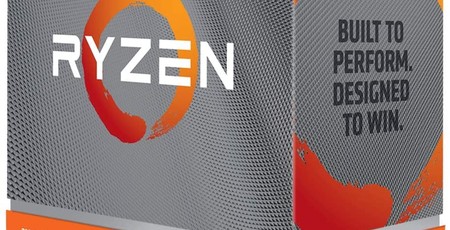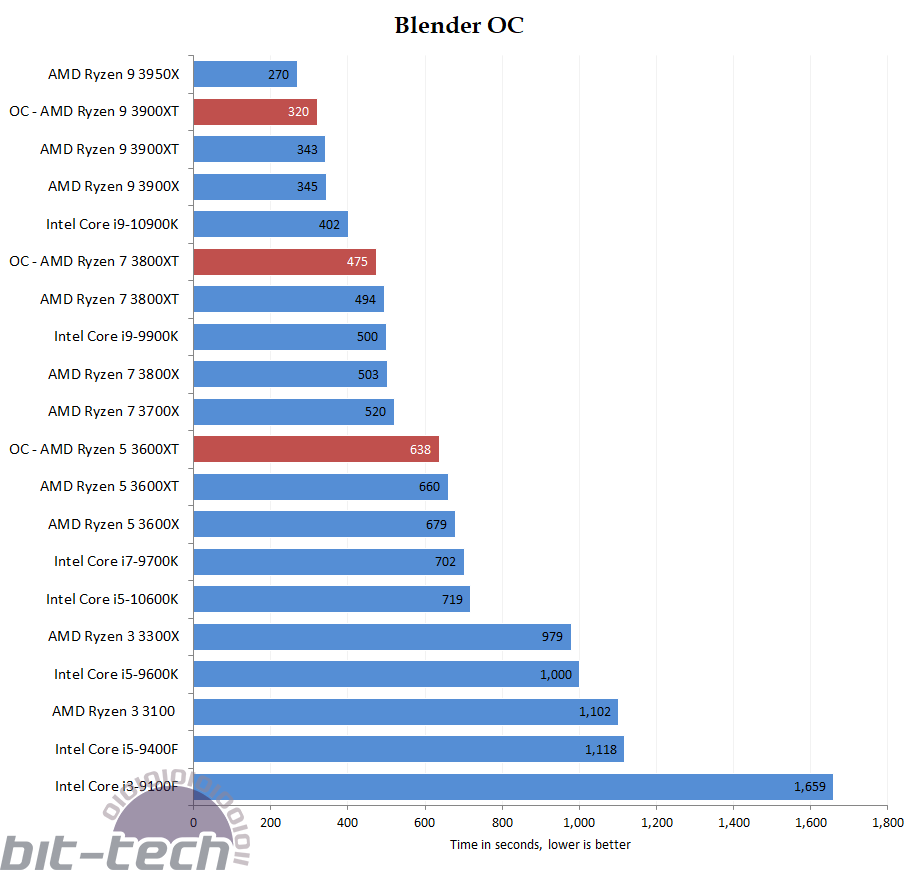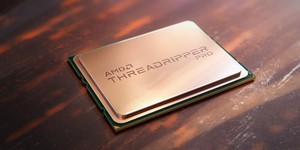
Overclocking
Increasing the voltage to 1.3825V we overclock by going as high as we can on the all-core multiplier, increasing it in 25MHz increments every time the machine runs our Blender test without failure. To this end, we achieved 4.4GHz for the Ryzen 9 3900XT and 4.425GHz for the Ryzen 7 3800XT and 4.5GHz for Ryzen 5 3600XT. These are approximately 100MHz higher than we achieved using exactly the same settings on the standard X parts from the same model family, underscoring the benefits of the improved 7nm process. Here is how that plays out on the intensive Blender test.

The gains are modest because the chips run at reasonably high all-core speeds by default. The biggest recipients of the OC are the 3600XT and 3900XT because they run at lower frequencies out of the box. Is it worth it? If your projects are long, then yes, though you do sacrifice single-core frequency by going down this all-core route.
Performance Analysis and Conclusion
We see clear evidence in almost all the tests that Ryzen XT chips do run at higher frequencies than their X counterparts. This uplift is consistent across threads, and typically increases overall performance by up to five percent in some benchmarks. The benefits are evenly spread across all applications and there ought to be no instances where X models are faster than the new trio.
Improvements are more muted in 1080p gaming, however, and though there is an increase for the three chips, you would never feel it in a game. Still, if AMD's aim is to reduce the FHD gap between it and 10th Gen Core, XT parts go some way into solving this problem.
We could normally therefore argue that what's on offer is enough to steer readers to these XT parts, but the case is not as simple as that. These new chips come in at their recommended prices whilst the X models are now typically selling for up to 15 percent less. The question is whether the extra performance is worth the sizeable price premium and, for the 3900XT and 3800XT, a lack of cooler in the box. We'd probably say that it isn't. Then again, if you have capable cooling and are coming from an older PC, a £50 price premium may not matter in the big scheme of things. The value argument is an individual one.
These chips make most sense for system integrators who likely have an attractive buy-in-bulk price from AMD. Upgrading a particular system from X to XT, without a price hike, represents a bit more value for the purchaser.
Overall, this trio of XT chips represents the smallest upgrade for Ryzen in quite a while. That says as much about how AMD perceives the current Intel mainstream competition than anything else, so users waiting for a meaty upgrade from Ryzen will need to hold fire until at least the 4000-series hits later this year. These are niche chips designed more to celebrate an anniversary than to move the performance needle to the right.


MSI MPG Velox 100R Chassis Review
October 14 2021 | 15:04








Want to comment? Please log in.